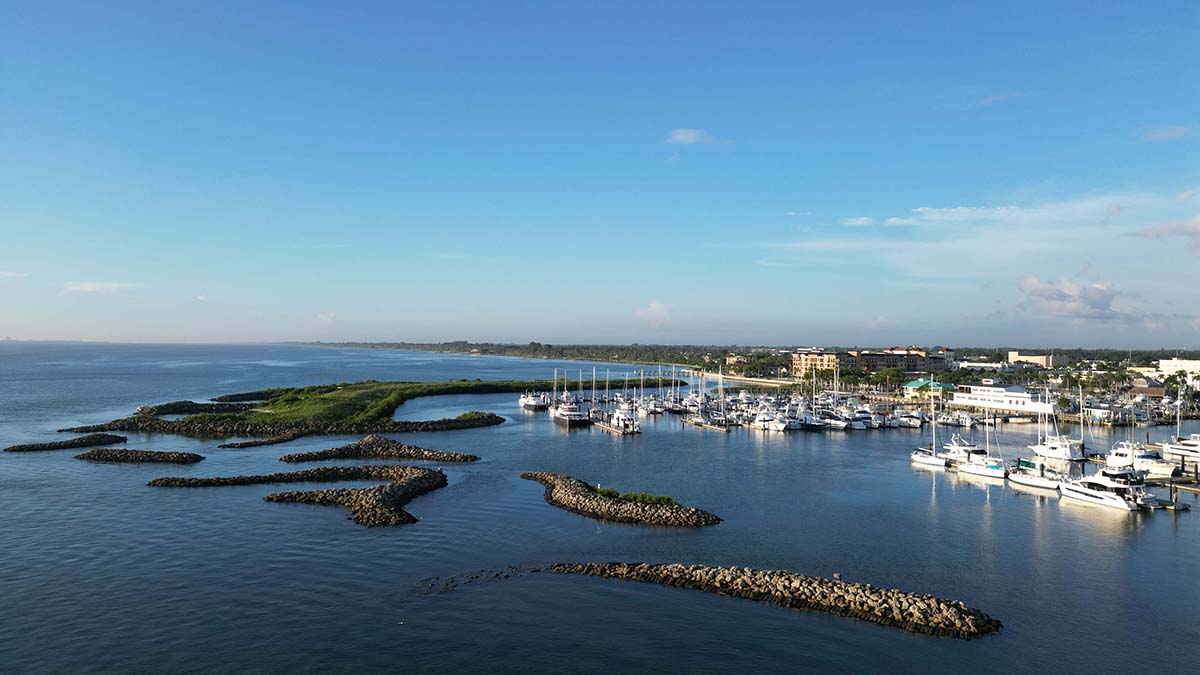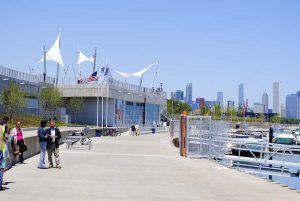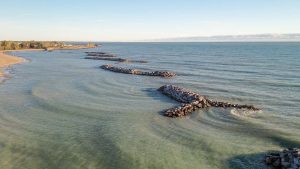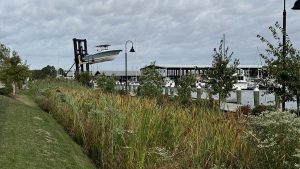
Preparing for a Changing Climate
Published on January 13, 2025According to the National Oceanic and Atmospheric Administration (NOAA), the 2024 Atlantic hurricane season was above-average in terms of storm activity, with a record-breaking ramp up following a peak-season lull. Of the 18 named storms, 11 were hurricanes, and five were “major” hurricanes with winds of more than 111 mph. Five hurricanes made landfall, and two of those were major storms. There were several records broken in 2024, including Hurricane Beryl, which was the earliest Atlantic basin Category-5 hurricane on record, causing significant storm surge flooding across parts of Texas and Louisiana.
With hurricanes Helene and Milton arriving just weeks apart in late September and early October, the United States saw the deadliest hurricane since Katrina in Helene, and one of the most rapidly intensifying storms on record in Milton.
What is driving these storms? Warm ocean waters provide energy for hurricanes, allowing them to gain strength more rapidly and potentially become more destructive when they make landfall. Gulf of Mexico hurricanes rarely intensified all the way to landfall in the northern Gulf prior to 2017, due mainly to cooler waters near the shoreline and less hospitable conditions in the atmosphere. Hurricane Helene rapidly transformed from a Category 1 hurricane to a Category 4 hurricane in less than a day on September 26.

Warmer waters are also contributing to sea level rise, as warmer water expands and takes up more physical space than cooler water. In addition to the environmental impacts on coral, habitat and threatened and endangered species that will continue to drive more intense review of proposed marine development projects, rising sea levels and storm surges accelerate coastal erosion and impact shoreline stability and infrastructure.
On the Great Lakes, warmer water often translates to less ice cover in the winter and increased evaporation that affects water levels. Why does ice cover matter? The largest storms occur in the winter, and in years past we could rely on a shelf of ice anywhere from a few hundred feet wide to many miles wide to provide a solid, protective barrier that prevented storm waves up to 30 feet high from reaching the coast. Without that layer of ice, those waves now often cause severe damage to the coast and adjacent properties – driving many property owners to spend hundreds of thousands of dollars in shoreline armoring that actually makes coastal erosion worse over time. With many more storms of much higher intensity providing greatly increased rainfall, many of the Great Lakes went from record low levels to record high levels in the span of five to six years. The best climate projections from NOAA today suggest a much less predictable future for water levels and coastal erosion in the coming decades across all the Great Lakes.
While the state of Florida has passed legislation in 2024 removing the words “climate change” from most state laws (despite record-setting heat and storms in 2024), the marina industry cannot pretend climate change is not happening. On the contrary, the industry needs to act to protect its infrastructure, and the time to prepare is now.
Adaptability and Resilience
So, what can marina owners do to protect their facilities? There are a number of strategies that can make a facility more resilient to the impacts of climate change, especially when an owner is completing a major renovation, reconstruction after a storm or planning a new facility.

Consider Future Water Levels
The industry needs to prepare for a wider range of water levels than it has in the past. Whether it is rising sea levels, which according to NOAA have increased on average 3.99 inches since 1993 and doubled the rate of annual increase to 0.14 inches per year (meaning marinas can expect another 4 inches of rise during the typical 30 year lifespan of many dock systems), or high tide flooding that now occurs three to nine times as often as compared to 1970, adaptability is the key. Construct new buildings and critical infrastructure at a higher elevation than existing structures. Many local regulations in Florida and New York now require new buildings to be constructed at elevations several feet higher than in the past to address the increases in storm surge conditions from larger and more powerful storms.
When building seawalls, fixed wave attenuation structures or fixed dock systems, consider designs that allow retrofit to a higher design elevation in the future. Give consideration in the structural design for how to extend the wall system upwards in 12-inch increments over time, such as modular walls, or the ability to weld on additional sheeting to a subgrade structure designed for a higher wall height than what may be needed and constructed today. The same goes for a fixed wave attenuation structure, which should be designed to allow for the addition of higher structures as needed. Fixed docks should be able to be raised as needed every 10 years or so.
Consider floating docks wherever possible, but pay particular attention to the connection to shore, and make sure that the shore connections either anticipate higher future water levels or can be raised in the future.
Finally, design utility systems, especially electrical infrastructure, for both short-term storm surge conditions and long-term conditions. To minimize upland flooding, consider the construction of seat walls that provide attractive seating and landscape elements while also allowing for the addition of temporary flood prevention panels to protect upland infrastructure.

Offshore Coastal Protection Systems
Rather than focusing construction of coastal protection structures on the shoreline itself, consider more advanced Engineering with Nature strategies that allow for a soft shoreline protected by segmented offshore breakwaters that provide protection from waves while allowing improved water circulation and creation of habitat. These strategies have been proven in very high energy offshore environments that face waves up to 30 feet in height and can be configured to rely on natural currents to direct sediments where needed on shore to provide beach nourishment or direct them around a facility to reduce dredging.
Upland Stormwater Management Strategies
The goal of stormwater management over the last century has focused on collecting water on site and moving it somewhere else via pipes as fast as possible. This approach is both outdated and unhelpful for most waterfront marina sites, where infiltration on site and cleansing stormwater runoff before it gets into the water body are better strategies. Rain gardens and bio filtration along the shoreline prevent fertilizers and contaminants from vehicles and paved areas from reaching the water. This reduces nutrient and sediment load in the water, which can cause excessive weed growth and increase the frequency of dredging.
The addition of pervious pavers can allow water to infiltrate into the ground water table more quickly and reduce flooded parking areas. Where possible, raise the elevation of occupied areas and create stormwater capacity in lowland areas where stormwater can accumulate temporarily without impacting working areas.
Robust Floating Dock Systems
Given that the world is facing more frequent and more intense storms, investing in more durable and robust docking systems may be warranted. In seasonal facilities, such as those found in the Great Lakes, recognize the difference between summer wave climate conditions where the docks are fully loaded with boats and winter conditions where larger storms are expected, but the docks will not be occupied with people or boats. So long as the docking system can survive the more intense off-season storms, especially when there are no boats or people on the docks, it may be acceptable to allow for wave climate conditions during the offseason that would not be acceptable during the summer months when the facility is occupied.
Thinking Long Term
From a longer-term perspective, it is recommended that all facilities incorporate strategies to reduce carbon emissions that are contributing to climate change. While reversing the damage that has already been done is not likely, it is still possible to limit future impacts and slow the acceleration of climate change.
While it is easy to get overwhelmed by the constant barrage of messaging on how to save the planet, from whether to use paper, plastic or reusable bags to composting and recycling, the most effective strategy that can be implemented to make the biggest impact is relatively simple: electrify everything. Move away from fossil fuel-powered equipment and appliances and shift to electric-powered alternatives. Yes, the electric grid generates carbon emissions in most areas, but the grid is actually getting cleaner every year, reducing impacts year after year without changing anything in a facility.
Marinas should consider adding solar panels and replacing gas-burning furnaces and hot water heaters with electric heat pump models. Electric heat pump systems provide heat at 400% efficiency compared to gas, while an 80-gallon electric hot water heater can run for one year for the same cost and energy usage as running a 100w light bulb. Finally, switch to electric vehicles, including cars, boats, forklifts, travel lifts and lawn maintenance equipment, all of which cost less over time and require less maintenance.
These strategies can make marina facilities more resilient to climate change, save money and improve profits at a lower risk.
| Categories | |
| Tags |





